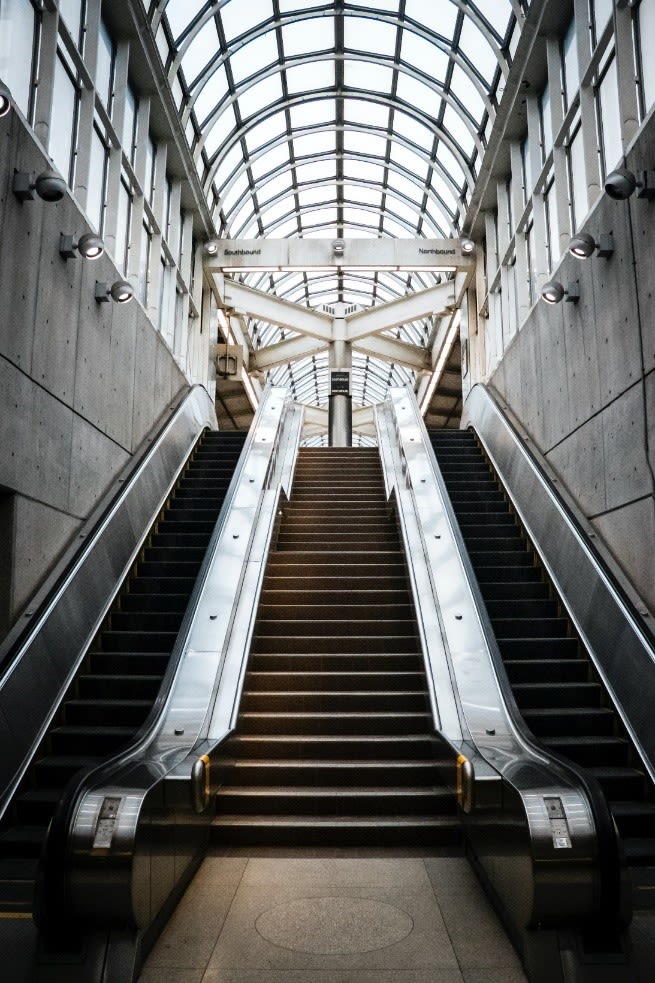Metrolinx shares Ontario Line station design principles
Keeping reading to learn about the five key design principles for the new Ontario Line stations.
Sep 9, 2021
Your first impression of a new transit system should be a good one. And since that first impression is made in a station, it must be well designed.
That’s why Metrolinx established core design principles for Ontario Line stations, which a panel of specialists will present in a virtual open house for the West Segment of the Ontario Line tonight (Sept. 9) at 6:30 p.m.
“We want people to be proud of their neighbourhood’s station and that’s why we’ve established clear design principles,” said Malcolm MacKay, Ontario Line project sponsor.
The five key principles can be summed up as:
- passenger-focused design;
- system reliability, efficiency and safety;
- public realm benefits and place making;
- context and integration; and
- intuitive wayfinding.
Let’s look at each of those five individually.
Passenger-focussed design
Metrolinx is passenger-focused – and that principle is especially important when designing stations.
“Our goal is to build safe, accessible stations that help you to get on board quickly, whether you are an everyday regular commuter or a tourist visiting Toronto for the first time,” MacKay said
This can be achieved with direct, short and convenient connections. When reviewing the distance between two points, planners do not just look at horizontal distances across station walkways – they also try to keep the up and down movements on stairways, elevators and escalators to a minimum.
The TTC’s Yorkdale Station is an example of passenger-focused design with multiple access points. (Unsplash photo by Lianhao Qu)
Universal accessibility can be established through user-friendly design and details like having more than enough elevators. The combination of electric trains that always stop in the same position, sliding doors to give riders consistent places to board and platform floor markings designating waiting areas will also improve accessibility.
System reliability, efficiency and safety
“Stations must stand the test of time,” MacKay said.
Ontario Line stations will be built to last with durable materials and designed to look good over time and adapt to changes in technology. This will make them future-proof and ready for eventual changes in the transit system.
These glazed terracotta exterior panels are an example of the sort of attractive elements being considered for Ontario Line stations.
The team will also be identifying opportunities for the integration of green infrastructure into the station designs.
As previously reported, stations will also feature elements like platform-edge doors to keep customers safely separated from moving vehicles.
Public realm benefits and place making
The third principle is stations must have high-quality designs that are an attractive addition to the neighbourhood.
World of good examples – Station entrances for the new Copenhagen Cityringen line are designed to fit with their surroundings. (Mike Winterburn photo)
“Each station should be a welcoming community destination in and of itself,” MacKay said. “We will achieve that with high-quality urban design and landscape architecture.”
Context and integration
Next, designers must look at context and integration.
Toronto residents can see a great example of a subway station that fits with the surrounding architecture at the corner of Queen and Yonge. (Mike Winterburn photo)
Public-facing elements of the transit infrastructure – including the entrances, elevators and escalators, concourses and platforms – will be designed to fit into the existing and planned urban context and will be integrated into communities.
“We look at each station individually,” MacKay said. “They must not be cookie cutters.”
“Ontario Line stations will be built in well-established neighbourhoods, so we have a responsibility to make sure they fit in.”
Intuitive wayfinding
The fifth and final principle is that stations have to be easy to navigate.
Ontario Line stations will have a simple and coherent system to help people find their way around by using easy-to-understand design elements and signage.
Simple details can make a big difference. For example, transparent facades can help customers get a sense of where they are in relation to outside streets, and similar treatments to station entrances can help people quickly understand where they need to start their journeys.
Metrolinx will have a consistent strategy for orchestrating what people see outside the station, with immediately recognizable signage, landscaping, and street furniture.
“The end result of these design principles will be accessible stations that meet the needs of our passengers and fit the communities they will serve,” MacKay said.
Readers who would like to learn more about the design principles are encouraged to register for tonight’s virtual open house.
by Mike Winterburn Metrolinx communications senior advisor
